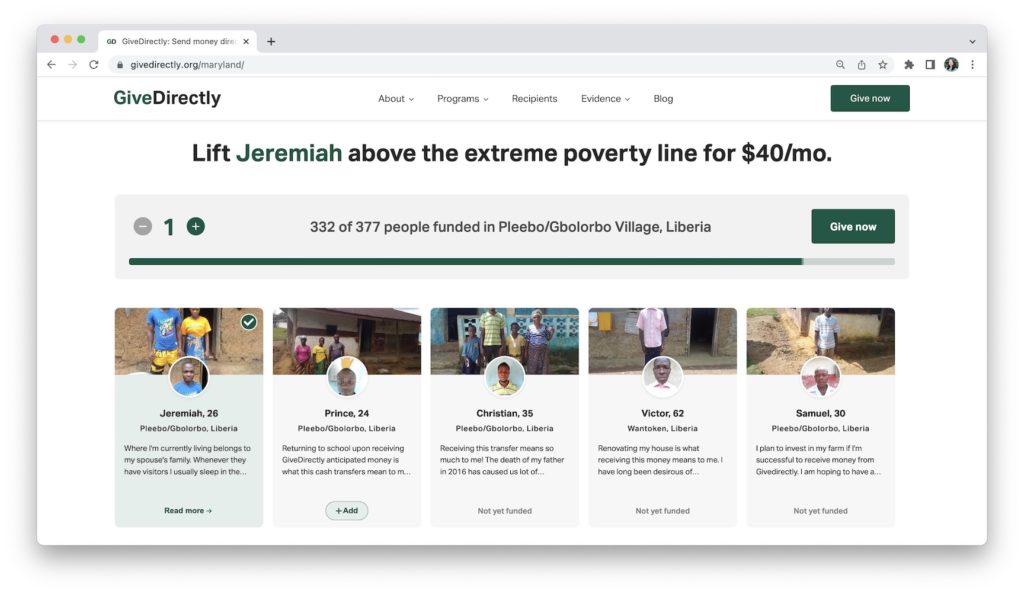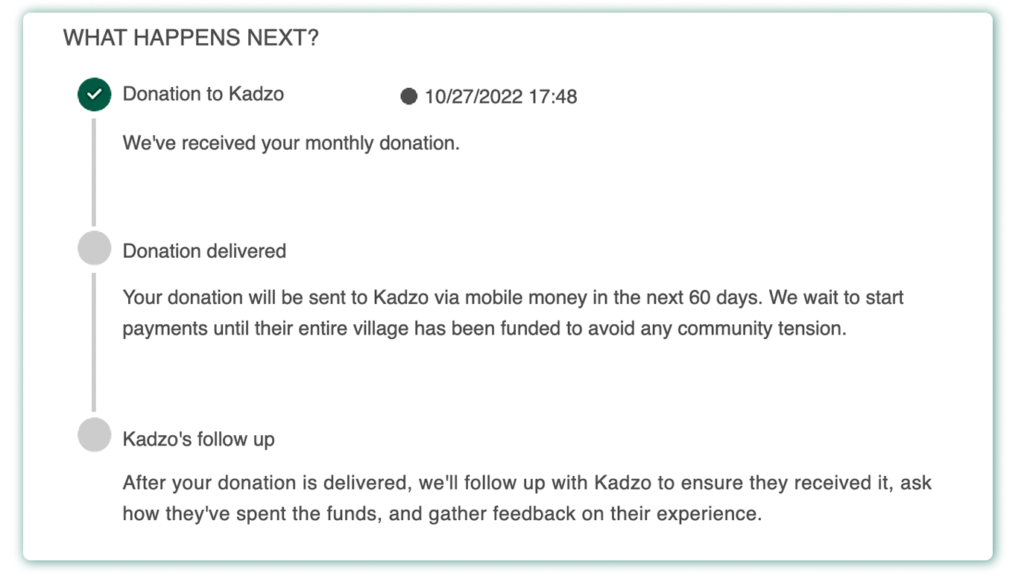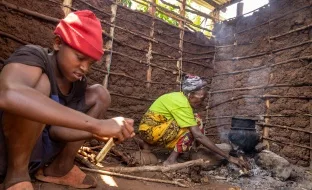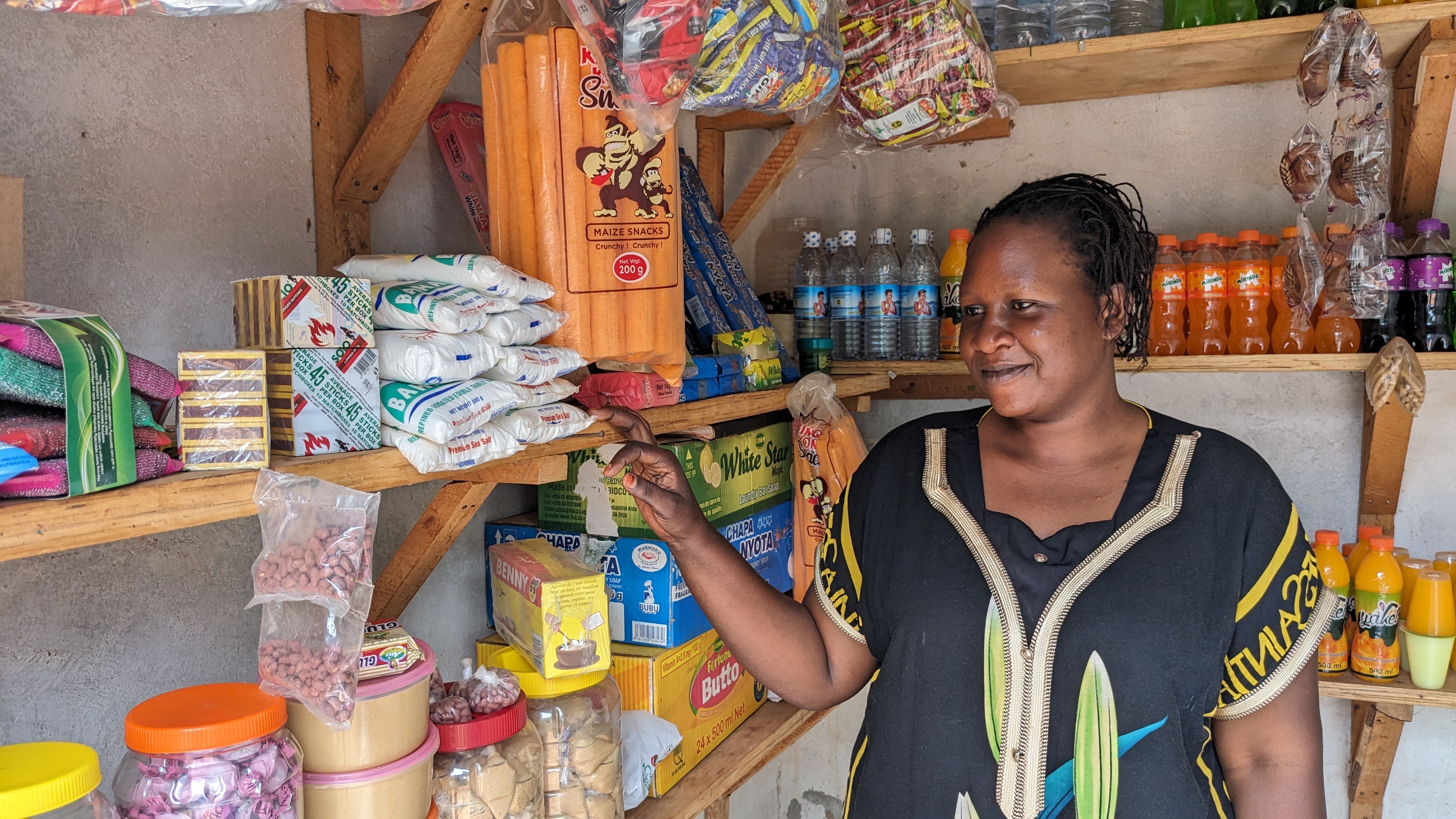UPDATE: As of August 2023, we have stopped matching donors with participants receiving cash transfers. We began matching donors with recipients receiving transfers to better illustrate the impact of your donation, and we learned a lot from testing this approach. Delivering this experience in a high-quality way required more time from field and technical staff, as well as program participants. While this experience kept donors engaged longer, it didn’t become popular enough to justify the costs.
Our goal is to simply be a delivery system: a donor doesn’t give to GiveDirectly, they give to someone in extreme poverty. Now, we’re taking the next step in this effort by letting donors see where their money is going, hopefully bringing them closer to those they’re trying to help. We’ve built a new tool allowing donors to know who will receive their monthly donation before giving and receive updates afterwards.
At this point, you might be skeptical. We’ve all seen similar looking tools only to learn later that the people we donated to may have just been stock-images. But this is different. How? Much is answered in our FAQs and below.
This tool further connects donors to their impact

While this may look like other programs (e.g., child sponsorship, micro-grants), those often present an illusion of directness but beneath the hood are anything but. For example:
- Donations are transferred to other organizations, not people
- People featured were already given aid before donations were made
- Unique stories are collected and later ‘paired’ with donors or shown to multiple donors
Too often savvy donors can see through this, leaving them jaded about giving to any organization. We believe our tool is actually the first of its kind, and we hope to create trust by giving donors a sense of three things:
1. Incrementality – donating means one more person is lifted above the extreme poverty line of $2.15 a day, a transformative impact that easily gets lost in slogans and annual reports.
2. Traceability – one often wonders if their donation really went to where the organization said it went. Our tracking updates mean donors will be able to see where their funds are at a given time.

3. Humanity – direct giving is evidence-backed, but it’s ultimately about people trusting other people to meet their own needs. To quote researcher Elizabeth Dunn, “Don’t reward your donors with pens or calendars; reward them with the opportunity to see the specific impact that their generosity is having.” By hearing the unedited words of the people they’ve reached, donors will feel one step closer to that specific impact.
We’ve worked to reduce risks recipients can face from that connection
The humanity piece requires careful consideration to assure the people in poverty sharing their stories are empowered and retain their overall privacy.
We avoid selection bias by placing pre-enrolled people in a queue
Crowdfunding and micro-loan organizations that allow donors to choose from a library of people in need allow for browsing bias – some choose who to fund based on factors like attractiveness, skin color, and family status.
Our goal is to lift entire regions out of extreme poverty, not just the most compelling few. We avoid this choice bias by showing a queued list of people in poverty in a village who are yet to be funded, only allowing donors to select how many to support.
We user-test with people in poverty to learn how they prefer to be featured
In refining our design, we conducted in-depth interviews with people reached by past programs across Bomet, Kilifi, and Siaya counties in Kenya. We showed them three iterations to gauge preferences.
Two thirds of those interviewed preferred Option C, saying that the brief description alongside their picture gave a clearer representation of their background and plans for potential donors. The remaining third preferred Option B, mostly for the larger photo display size which they felt better visually communicated who they were. We opted to keep the dual display that allowed for larger image design upon clickthrough.


We receive informed consent before sharing stories on the website
When we enroll a village for transfers, we clearly distinguish which of our requests are requirements (e.g. registering a SIM card) and which are optional (e.g. sharing their photo & story with donors). About 11% of people exercise their right to decline to share their story – they’re still paid from a flexible fund. To further safeguard recipients for harm or harassment, we do not share their last name or village name.
Early testing suggests this tool will direct more donations to people in poverty
Collecting these stories does not significantly hamper our efficiency, as field officers already enroll each recipient in-person regardless. For a rough comparison: this program (with stories) runs at 87% efficiency so far, our Kenya UBI experiment (without stories) runs at 88%.
This cost is worthwhile because we believe the tool will drive more monthly commitments which drive more dollars to people in poverty. On average, people who elect to give monthly end up giving more in a year than those who give one time donations – this is true for our donors and the sector as a whole.
A/B web-testing this spring found that, compared to our standard landing page, seeing this gift-matching view leads to:
- 4% increase in chance of donating at all
- 28% increase in the chances of making recurring gift
- Average one-time donation size was 31% higher – perhaps because this tool makes for a stronger impact & trust signal than the control, even if these donors still ultimately navigated to give one-time not recurring.
Additional interviews and surveys found that users rated the new tool as more useful on average than the standard landing page, and gave the new tool less than half as many “poor” ratings on usability.
We’re still running additional tests to determine exactly which parts of this tool are the most impactful for raising money for people in poverty. Since prototyping in Kenya earlier this year, we’ve launched the tool for our basic income program in Liberia.

